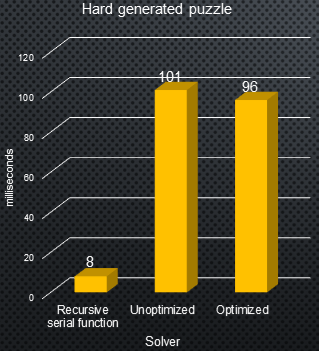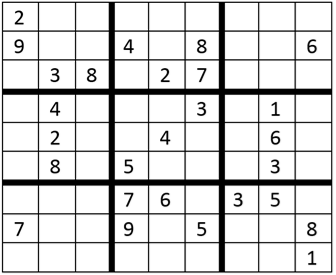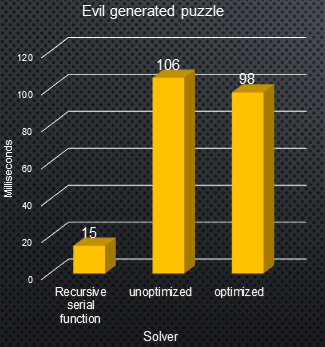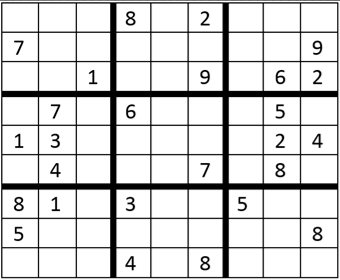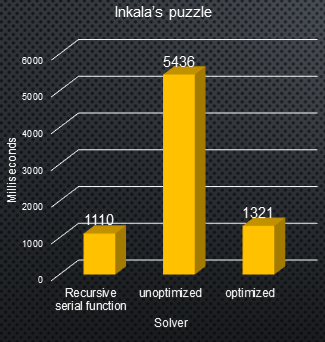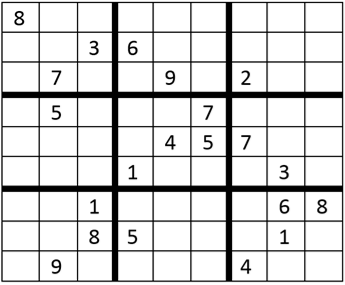Semi-Team
GPU610/DPS915 | Student List | Group and Project Index | Student Resources | Glossary
Contents
Semi-Team
Team Members
- Michael Fainshtein, Research, Development, Presentation
Progress
Assignment 1
Rules to play Sudoku
Sudoku is a logic puzzle where a grid composed of mini grids is presented to the player to fill each cell with a number unique to its column, row and mini-grid.
Sudoku Backtrack Algorithm
Find row, col of an unassigned cell
If there is none, return true
For digits from 1 to 9
a) If there is no conflict for digit at row,col
assign digit to row,col and recursively try fill in rest of grid
b) If recursion successful, return true
c) Else, remove digit and try another
If all digits have been tried and nothing worked, return false
Sudoku Backtrack Function
/* Takes a partially filled-in grid and attempts to assign values to
all unassigned locations in such a way to meet the requirements
for Sudoku solution (non-duplication across rows, columns, and boxes) */
bool SolveSudoku(int grid[N])
{
int row, col;
// If there is no unassigned location, we are done
if (!FindUnassignedLocation(grid, row, col))
return true; // success!
// consider digits 1 to 16
for (int num = 1; num <= n; num++)
{
// if looks promising
if (isSafe(grid, row, col, num))
{
// make tentative assignment
grid[(row)+(col*n)] = num;
// return, if success, yay!
if (SolveSudoku(grid))
return true;
// failure, unmake & try again
grid[(row)+(col*n)] = UNASSIGNED;
}
}
return false; // this triggers backtracking
}
Source
http://www.geeksforgeeks.org/backtracking-set-7-suduku/
Assignment 2
Challenges
Process
Kernel
Assignment 3
Optimization
Global variables utilized in the backtrack kernel were copied into registered memory
//add registered memory int *registeredBoards= boards; int *registeredEmptySpaces = emptySpaces; int *registeredNumEmptySpaces = numEmptySpaces;
For a device of computation capacity 5.2
- set the threads per block to 1024 from 512 - set the maximum blocks to 32 from 256
Results
Hard Generated Puzzle
Arguments: 112 219 244 268 296 323 338 352 367 424 463 481 522 554 586 628 645 683 747 756 773 785 817 849 865 898 991
Generated at http://www.websudoku.com/
Evil Generated Puzzle
Arguments: 148 162 217 299 331 369 386 392 427 446 485 511 523 582 594 624 667 688 718 721 743 775 815 898 944 968
Generated at http://www.websudoku.com/
Hardest Puzzle
Arguments: 118 233 246 327 359 372 425 467 554 565 577 641 683 731 786 798 838 845 881 929 974
Created By Arto Inkala
